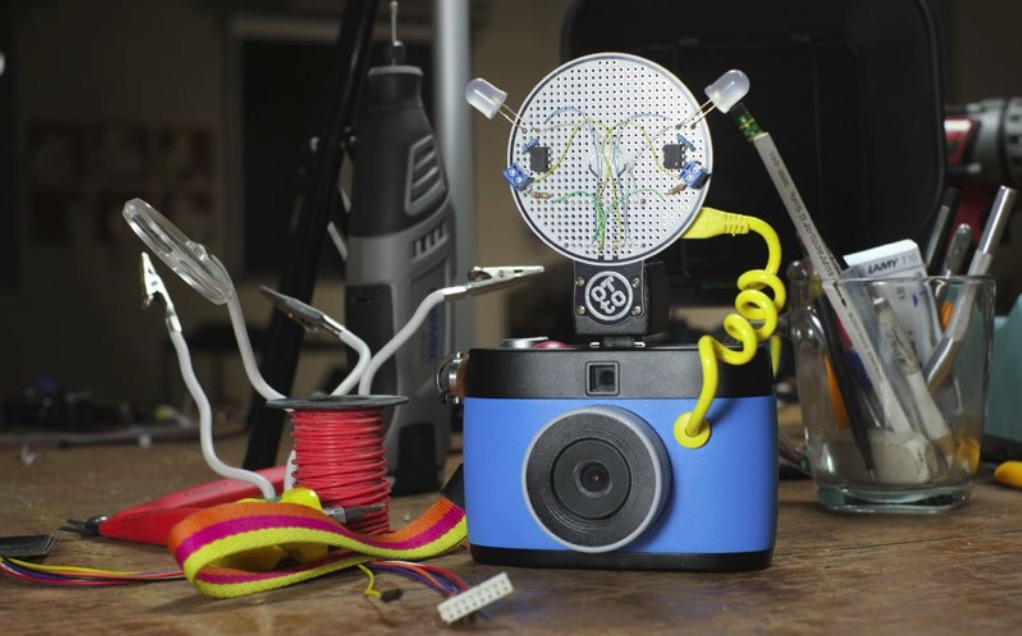In The Making
As the maker revolution continues, brands are now opening up their processes to let consumers play, modify and tinker with their goods

Hidden among the flashy launches of “revolutionary” new smartphones, tablets and other shiny stuff, a far greater revolution is brewing – the maker revolution. It’s been called the Third Industrial Revolution: the high-tech DIY culture of the maker movement has expanded from the realms of crafters, hobbyists, tinkerers, geeks and gearheads to offer a real alternative to consumer electronics giants. Proud makers are rejecting ready-made products to build their own new gadgets, from mobility solutions and kitchen tools to music players, robotics, jewellery and games.
With the omnipotence and omnipresence of technology in our lives, DIY gadgets are one way to liberate ourselves,making people feel less like mere consumers and more like creators.“Making is an antidote to feeling that society is owned by tech, rather than the other way around,” says Patrick Hussey, chief communications officer of maker crowdfunding site Crowdrooster.
The first major survey of maker culture, recently conducted in the US by Intel, found that 15 million adults, or 5% of the population, describe themselves as makers, a figure the brand expects to rise.Over half of those makers create something with electronic tools twice a week. “People have an innate desire to play, problem-solve, mess about. When they are given the right tools, they can do amazing things,” says Clive Beale, director of educational development at the Raspberry Pi Foundation.
Making technology is not exactly new – Steve Jobs was involved with early maker experiments in the 1970s – but a combination of accessible tech, like the €20 Arduino and £25 Raspberry Picomputers, and a growing dissatisfaction with pricey must-have gadgets, are pushing making into the mainstream. “At the moment, most of the people making technology have one perspective, and traditional business models,” says Massimo Banzi, Arduino’s chief executive officer and co-founder. He points to mainstream tablet devices that are tied to stores, such as iTunes or Amazon, and keep consumers locked in to a brand that decides what they can do.
“These shiny aluminium and glass things are just delivery devices,” says Beale, who believes that “people are coming back to the idea that computing is a tool for creativity.”
Two and a half billion of us carry around a computing device everyday, but only a tiny percentage actually understand how they work – a knowledge gap the maker movement hopes to close. At MakerFaires, members of the maker community come together to share their ingenious creations – from drones to smart lawn sprinklers – and their experiences. “If you go to Maker Faires, there’s a huge buzz,” says Beale. “It’s not just niche hobbyists attending, but whole families – these are normal people treating making as a normal thing.” And the growing appeal of Maker Faires is making them major global events: in 2013, 530,000 people attended Maker Faires in 10different countries, 64% more people than in 2012 and 335% more than 2011. London recently scored the first major Maker Faire outside the US, to be held at the Queen Elizabeth Olympic Park in 2015. The event is expected to attract up to 75,000 people.
Key maker tool Raspberry Pi has become one of the most popular ways to understand computing and what it can do. The credit-card-sized computer was launched in 2012; it was expected that around10,000 would be sold to educational institutions around the world. But more than three million have now been sold to kids, families, schools and businesses alike. The single-board computers can control everything from cocktail-pouring robots to garage-door openers to microbrewery systems.


Twitter-enabled coffee pots, pollution sensors and wedding photobooths – whatever a maker can dream up. Accessibility is key. “Arduino helped a bunch of people who don’t have a background in technology to take some of their ideas and turn them into something working, something practical,” says Banzi.
People aren’t just using maker tools to find new ways to interact with technology, but with everyday objects too. The MaKey MaKey circuit board, developed by researchers at MIT Media Lab, can use any conductive object or material to control musical instruments, games or even social media posts.
The platform was originally developed to get kids playing with tech, but it has also been adopted by experimental musicians. Synth-pop band Echocell hooked up a MaKey MaKey to dismembered doll heads to create a cutely macabre piano for their live shows, while electronic musician J Viewz created a version of Massive Attack’s Teardrop using vegetables connected to the circuit board and a keyboard.
“Making is a mixture of old and new craft,” says Hussey. And while much making is heavily gadget-focused, a cadre of craft makers is combining the vogue for old-school crafts with maker tools. New York-based hybrid designer Becky Stern merges jewellery and embroidery with Arduino and US-based open-source hardware system Ada fruit to create high-tech pieces such as LED sequins. Stern shares video tutorials for each item, to inspire fans to create their own projects. Likewise, Instructables has become a popular online space for people to explore and share their maker creations, from tree houses and solar-powered trikes to a musical bench or a DIY Oculus Rift.
Despite the rebellious roots of the maker movement, commercial success is key to spreading its message of liberation. Computer kitKano raised $1.5m on Kickstarter to become the most crowdfunded learning innovation ever. The £79 kit includes a Raspberry Pi board as well as a keyboard with built-in trackpad, wireless dongle and speakers – it just needs to be attached to a monitor to become a fully functional computer.
We’re also seeing the first wave of commercially available products based on maker tech. Built on the Arduino platform, the Cromatica light/speaker by Digital Habits was the first product launched on Crowdrooster. The clever light has a natural-gesture touch sensor to allow users to control the colour and intensity of the light, as well as Bluetooth 4.0 for streaming music. The completely open-source product was overfunded even before its pledge period finished; according to Hussey, Cromatica shows that maker products can be commercially successful.
Otto, a GIF camera, is the first commercial product based onRaspberry Pi and was created to be hackable by anyone who uses it. The retro-style camera has a manual crank that records a GIF as it’s turned, and can also do photobooth effects or time-lapse photography, and of course, it also syncs with your smartphone. The Otto’s highly successful Kickstarter launched in May 2014, and the cameras are expected to be on shelves for around $199 in early 2015.
Spying an opportunity, major brands are jumping on-board the maker train. Intel is a founding sponsor of the Maker EducationInitiative, alongside Pixar and business-tech consultancy Cognizant,and is also launching its own maker tools, such as the Galileo small-scale development board. Meanwhile, US tech retailer Radio Shack is repositioning itself as a one-stop-shop for makers with its new Boston concept store, which offers “Do It Together” idea centres that allow shoppers to test out their ideas with staff assistance.
Even governments are getting involved. America’s Defence Advanced Research Projects Agency has created a $10m grant to encourage making among high-school students and given $3.5m to makerspace chain TechShop to open new sites. The White House is launching its own Maker Faire, while the Chinese government has announced plans to open a hundred makerspaces.
But the commercial impact of maker products could be greater still. The maker revolution reveals a desire for products to be the way we want them, which is not necessarily the way consumer electronics companies want to build them. “The possibilities shown by people doing hobby tech have raised consumers’ expectations,” says MIT Media Lab researcher and co-creator of MaKey MaKey, Eric Rosenbaum. “The fact that there are alternatives in the world puts pressure on manufacturers.” For example, the prospects for popular smart thermostat Nest (recently bought by Google for $3.2bn) maybe affected by the rash of makers building their own versions for as little as $43. Ada fruit is even developing a smart thermostat kit for under $100 – still way under Nest’s $249 ticket price. Each of these maker systems can then be hooked up to weather sensors or wireless gardening systems to gain more smart-home functions than the locked-down Nest offers.
“Veteran makers can make things that big companies can’t – they’re bolder, more agile, independent,” says Hussey. The innovations dreamed up by makers already offer valuable inspiration to tech brands and carmakers such as Ford, but right now, a large proportion of people still want to just buy a product. “People will, in not that distant a future, be able to build DIY consumer electronics,”says Rosenbaum. “But we’re looking at an ecosystem of people who want various amounts of control – it’s about offering different levels of interaction.” Consumer electronics could be offered in both off-the-shelf and maker editions (like the Cromatica) to cater to less confident consumers – but the growing number of makers suggests that within 20 years, the maker edition will become standard.




